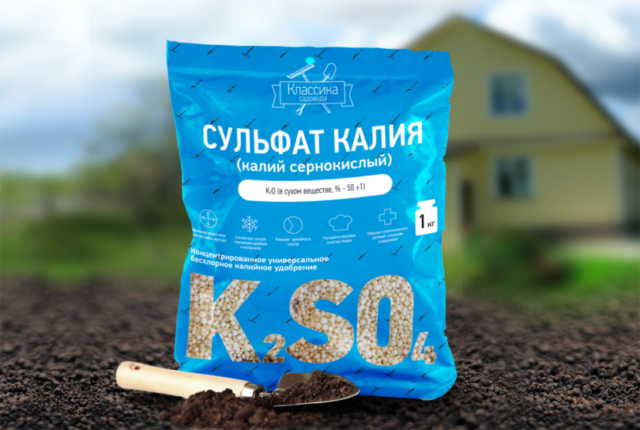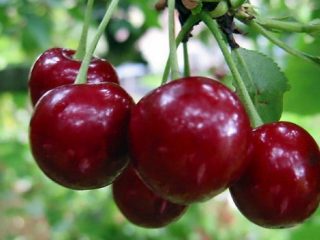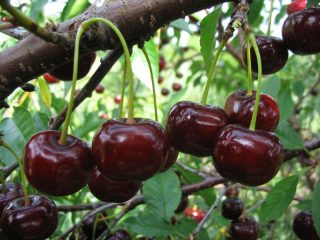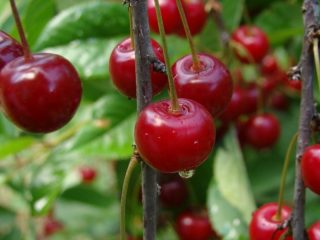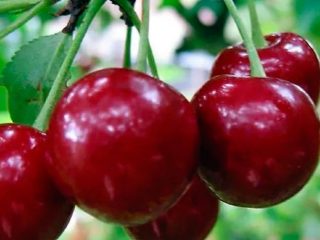Content
- 1 The importance of autumn feeding of cherries
- 2 What fertilizers can you feed cherries in the fall?
- 3 Rules and methods for fertilizing cherries in the fall
- 4 When can you feed cherries in the fall?
- 5 How to feed young cherries in the fall
- 6 How to feed cherries in the fall after harvesting
- 7 How to feed cherries in the fall so that they bear fruit well
- 8 How to feed cherries in the fall using folk remedies
- 9 Features of autumn feeding of cherries in the regions
- 10 Aftercare
- 11 Conclusion
The abundantly fruiting cherry tree quite depletes the soil. To replenish the supply of nutrients, it is necessary to apply organic and mineral fertilizers several times during the season. At the same time, it is very important to feed the cherry in the fall, since this will not only increase its frost resistance before the coming winter, but will also lay the foundation for the harvest for the next year.
The importance of autumn feeding of cherries
During the growing season, cherries actively absorb nutrients from the soil. In addition, microelements necessary for growth are actively washed out of the soil layer by melt and rainwater. Nutrient deficiency negatively affects the development of trees; they slow down their growth, bear fruit worse, become more vulnerable to diseases, and freeze more often in winter.Naturally, soil fertility is restored very slowly, so the only way to help plants is to apply fertilizer.
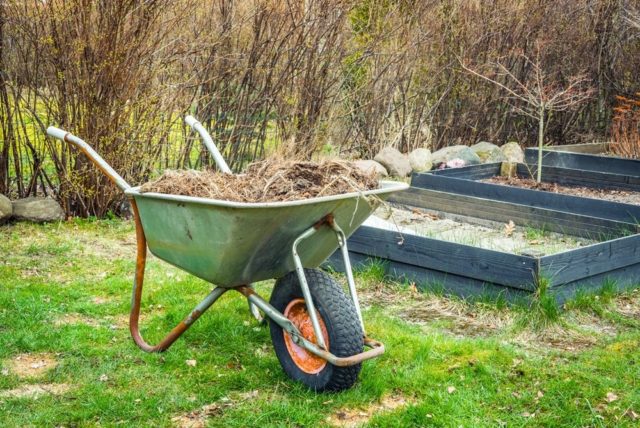
Autumn feeding of cherries is the key to a good future harvest
Autumn feeding is very important for cherries. It performs several functions:
- Helps to quickly restore strength after fruiting.
- Increases next year's yield by increasing the number of flower buds.
- Increases frost resistance.
What fertilizers can you feed cherries in the fall?
A feature of autumn fertilizing of cherries is the timing of fertilizer application. Its fruiting ends quite early; as a rule, by mid-summer the harvest ripens even on the latest varieties. After this, stop using any nitrogen-containing mineral fertilizers, as well as fresh organic matter, for feeding. Before the end of the growing season, various potassium-phosphorus fertilizers, their combinations, as well as some folk remedies, for example, wood ash, are used.
Rules and methods for fertilizing cherries in the fall
In addition to early fruiting, cherries are one of the first to finish the growing season and go into hibernation. Therefore, all fertilizing is done quite early, in early autumn. Applying fertilizers at a later date will be ineffective, since with a high degree of probability the nutrients will not have time to be absorbed by the tree before it goes dormant. And over the winter, these fertilizers will partially disintegrate and will be partially washed out of the soil by melt water, which will have almost no positive effect on increasing soil fertility.
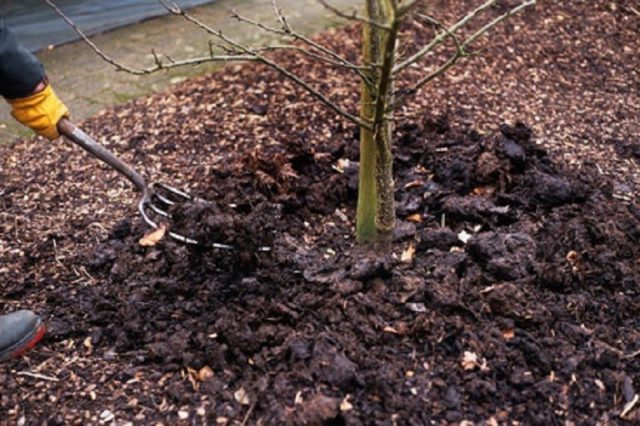
All fertilizers are applied to the tree trunk circle
In the autumn, only the root feeding method is used, i.e. all fertilizers are applied to the soil.It is pointless to use the foliar method at this time, since there are no leaves on the cherry at this time. Fertilizers are applied to the root zone simultaneously with digging up the tree trunk circle, while all substances are dissolved in water for better digestibility. This technique allows you to quickly and completely saturate the soil with fertilizers, ensuring their rapid absorption by the entire volume of the tree’s root system.
When can you feed cherries in the fall?
The timing of autumn feeding of cherries is purely individual and is calculated by gardeners independently, based on the climatic conditions of the region. It is very important that the trees have time to absorb the nutrients that were added before the growing season ends. In the southern regions, autumn feeding is done in early October, in more northern regions - in mid-September.
How to feed young cherries in the fall
When planting a seedling, a certain amount of various fertilizers is added to the soil along with it. They will be enough for several years, because in the first years of life the young tree does not require increased nutrition. You can start feeding young cherries from the 3rd year of life. From organic matter, you can use humus or old rotted manure, which is evenly incorporated into the soil of the trunk circle when digging it in the autumn. From mineral complexes, you can use potassium and phosphorus fertilizers, such as superphosphate, double superphosphate, potassium sulfate, potassium chloride.
Mineral fertilizers are applied to the soil around the tree trunk in dissolved form. For 10 liters of water you need to add 2 tbsp.l potassium sulfate and 3 tbsp. l superphosphate. To distribute the fertilizer evenly, it is advisable to make a shallow annular groove around the cherry trunk and evenly pour 7–10 liters (depending on the age and size of the cherry) of dissolved fertilizer into it.
How to feed cherries in the fall after harvesting
After fruiting, especially abundantly, the cherry is greatly weakened. To help it recover faster, you can use the same mineral complex as for young trees, but the amount of fertilizer must be increased by 1.5 times. Feeding fruit-bearing specimens with a solution of wood ash (1 cup per 10 liters) gives excellent results. Mature trees in the fall, after harvesting, can be fed with balanced complex mineral fertilizers with a low nitrogen content. These include such well-known compounds as nitrophoska and Diammofoska.
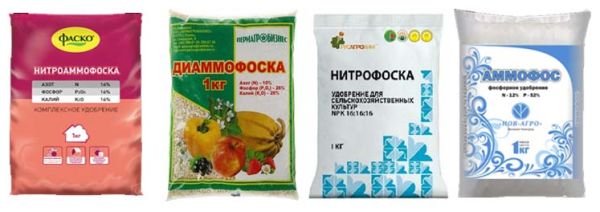
Balanced fertilizers with a low nitrogen content can also be used in autumn
The nitrogen content in them does not exceed 11%, so such fertilizers do not provoke excessive shoot growth and do not weaken the winter hardiness of trees.
How to feed cherries in the fall so that they bear fruit well
Like most fruit trees, the formation of flower buds in cherries occurs in the year preceding flowering and fruiting. Thus, the foundations for the next year’s harvest are laid the day before, that is, in the current calendar year. To stimulate the tree to lay more flower buds, it is necessary to fertilize regularly, including in the fall.
If organic fertilizers were used during the summer, then they should not be used in the fall; in this case, preference should be given to mineral complexes.If organic matter was not used, then now it is quite possible to add it. To fertilize in the fall for a good cherry harvest, old rotted manure is used, evenly incorporating it into the soil around the tree trunk. This is usually done when digging up the root zone; this procedure is necessary to ensure that in winter, as many pests as possible wintering in the ground under the tree are killed.
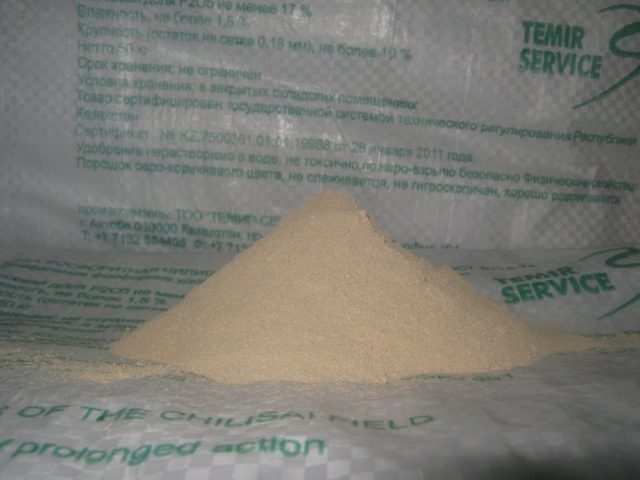
Phosphate flour - long-term fertilizer
In addition to organic matter, the use of phosphate rock as a fertilizer has a good effect. This is a fertilizer of prolonged (long-term) action; it decomposes gradually in the soil, enriching the upper fertile layer with phosphorus. Fertilizer is applied once every 3-4 years, in dry form.
A video on how to increase cherry fruiting can be viewed at the link:
How to feed cherries in the fall using folk remedies
Folk remedies for feeding cherries include peat, compost and humus; they are used to mulch the cherries around the trunk. Gradually decomposing, these fertilizers enrich the soil with various nutrients and microelements. Wood ash is an excellent fertilizer. Along with digging, it is introduced into the tree trunk circle at the rate of 0.5 -1 kg per 1 sq. m. m. Many gardeners use eggshells as fertilizer for cherries in the fall. Its use not only enriches the soil with calcium and other microelements, but also reduces soil acidity.
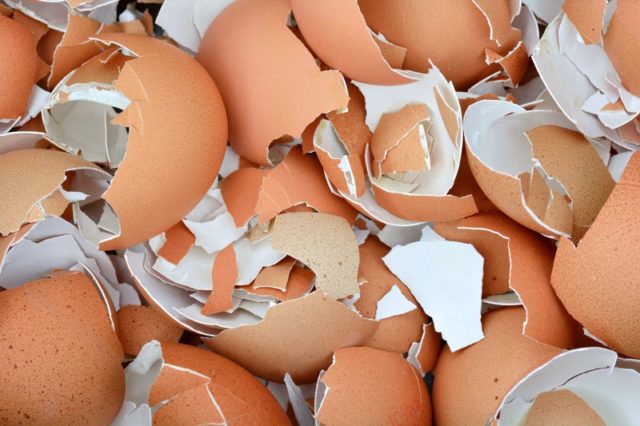
Egg shells will enrich the soil with calcium and remove excess acidity
For a similar purpose, slaked lime or chalk is added, since cherries grow best on neutral or slightly alkaline soils.
Features of autumn feeding of cherries in the regions
The general principles of fertilizing cherries in the fall apply to all regions. Features of applying fertilizers in a particular area depend on climatic conditions that affect the timing of work, as well as on the individual characteristics of the area, soil fertility, its acidity and other characteristics.
In outskirts of Moscow
Most of the territory of the Moscow region is occupied by poor podzolic and soddy-podzolic soils, as well as loams. The only exception is the southernmost tip of the Moscow region, where the land is quite fertile. For stable growth and regular fruiting, cherries in the Moscow region require fertilizing in the fall. Fertilizers are usually applied in the second half of September, and if the changeable weather near Moscow allows, the work can be carried out in early October.

It is more convenient for summer residents of the Moscow region to use mineral fertilizers
It is unlikely that it will be possible to use organic matter in the capital region simply because of the difficulty of delivering it to the site, so most gardeners, in order to feed cherries in the fall at the dacha, have to use various purchased mineral fertilizers.
In the middle zone and the Urals
Central Russia and the Ural region are characterized by a wide variety of soils, but they cannot be called fertile. It is necessary to feed cherries in the fall in these areas; for this you can use both organic matter and mineral fertilizers, and all work must be completed by the end of September, since frosts in early October, especially in the Urals, are far from uncommon.
In Siberia
The peculiarities of the climate of Siberia make it possible to grow a very limited number of varieties of cherries on its territory. Basically, these are low early varieties and species on dwarf rootstocks with increased frost resistance. These trees quickly finish bearing fruit and go into hibernation quite early, so in Siberia, cherries in the fall also need to be fed quite early, at the beginning of September, and in some northern regions all fertilization work must be completed by the end of August.
Aftercare
Autumn feeding is one of the last cherry care activities carried out during the season. After this, the tree trunks are whitewashed with lime, and they are also covered from possible damage by hares. It is imperative to do moisture-charging watering - this will increase the frost resistance of the trees. After this, it is advisable to cover the tree trunk circle with fallen leaves, treated with copper sulfate beforehand; this is done to prevent diseases.
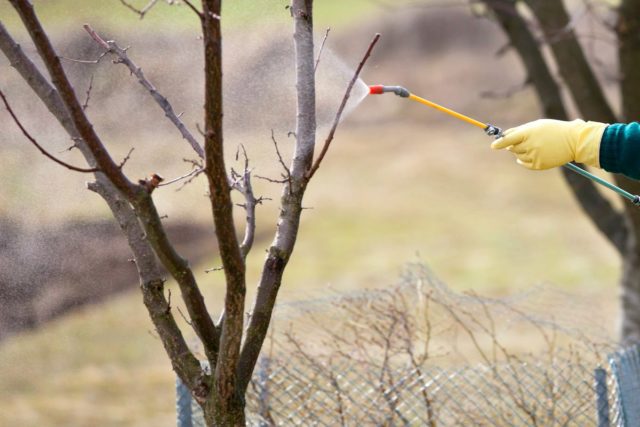
Spraying with urea will feed the cherries and kill pests
With the onset of frost, trees must be sprayed with a urea solution. This procedure not only strengthens the cherry tree, but also perfectly helps against pests that have taken refuge in the folds and cracks of the bark for the winter. Young seedlings need to be additionally insulated by tying them with non-woven material that allows air to pass through, as well as spruce branches.
Conclusion
If you feed cherries correctly in the fall, you can increase their yield the following season. In addition, fertilizing is a guarantee that the tree will successfully overwinter and confidently enter the growing season in the spring.This requires little fertilizer, the time required is also minimal, and the positive effect is very noticeable.
